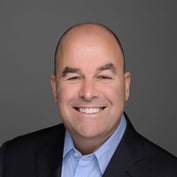In today’s synergy-centric world, smart financial advisors and attorneys are finding joint business development a path not only to cross-referrals but to heightened value for their clients.
At a time when investors’ financial needs have become more complex, private attorneys — such as specialists in estates and trusts, especially, as well as in family/divorce, taxes and elder care — are an important component of many FAs’ networks and in some instances, even considered part of their team.
What’s in it for lawyers? These relationships tap into a rich vein of new clients: FA referrals net attorneys seven out of 10 clients, according to Jonathan Powell, senior managing principal at CEG Worldwide, a coaching firm for top financial advisors, which is headquartered in San Martin, California.
Wirehouses, in particular, with multi-FA offices composed of as many as 20 to 50 advisors, can be potent sources of these referrals.
“Word quickly spreads. So it’s easier to get more referrals coming from more people quickly. And if the branch manager takes the lead, it can expand even quicker,” says Powell, who prior to joining CEG, managed Shearson/Smith Barney branches, then led Citibank’s West Coast brokerage business.
All but a handful of states prohibit lawyers from sharing revenue with non-lawyers, so informal strategic relationships with FAs, rather than formal alliances, are most common. However, advisors and attorneys can join forces to help one another acquire new clients in several ways that harmonize with lawyers’ professional rules of conduct.
“This is the model of the future for quality estate attorneys and top-notch financial advisors, rather than ‘Let’s just trade referrals back and forth from our existing client bases’,” says Vaughan Scott, senior vice president-investment officer of Axiom Financial Strategies Group of Wells Fargo Advisors, in New Albany, Indiana.
For instance, Scott may ask a high-level local attorney whom he knows to review a prospective client’s estate plan and furnish a critique. In such arrangements, lawyers invest their time at no charge with a view toward developing their own relationships with clients.
It’s inadvisable, however, for an attorney to accompany an FA to meet with prospects since this could be construed as a possible fee-sharing arrangement.
“There’s a fine line between creating opportunities for one another and, on the other hand, being together on the deal,” says Micah Buchdahl, an attorney who has a law marketing consultancy, HTMLawyers, based in Moorestown, New Jersey.
One way to generate those opportunities is to co-write print and online articles for legal publications, reprints of which can be used by both advisor and lawyer to market their practices.
“Financial services folks and law firms are getting together to offer up opinion and how-to articles. They’re splitting costs; so this can be very cost-effective,” notes Buchdahl.
Wirehouses encourage their FAs to form relationships with attorneys; and they’re putting muscle behind this by, for example, sponsoring American Bar Association continuing education programs. Bank of America Private Wealth Management paid for a large sponsorship of at least one such event with the objective of generating leads, recalls Buchdahl, who was in attendance.
These and other efforts are working well for Bank of America Merrill Lynch financial advisors, who “absolutely form relationships with attorneys — and they’re probably quite prolific,” according to Sam Gottesman, managing director and market executive-Mid Atlantic, with U.S. Trust, Bank of America Private Wealth Management and based in Washington, D.C.
Further, the big firms are holding their own events for attorneys and other centers of influence. Calling attention to its wide array of services, Wells Fargo Advisors offers “VIP Trips” to St. Louis headquarters, where the BD serves up four to 10 meetings with experts discussing WFA’s range of resources.
“The firm makes it very easy to cultivate attorney relationships,” says Neil Weissman, financial advisor and managing director-investments at Wells Fargo Advisors, in Ann Arbor Michigan. “When you show them the capacity of the firm, that further advances the attorney’s confidence in your ability to perform.”
Advisors with wirehouses are also sponsoring local Bar Association events on their own and placing ads in legal-industry publications to generate name-awareness. Likewise, law firms fund events and advertise in financial publications to connect with FAs.
Every year Weissman holds four to six client-and-prospect events. His presentations include an attorney and a CPA, who are at the ready to respond to audience questions.
“Having those experts with me adds value to the relationships that we have with clients,” Weissman says.
Building Trust
The all-important foundation for building a successful advisor-attorney understanding is trust.
From the attorney’s perspective, “particularly dealing in the high-wealth corridors, the cost of getting it wrong is relatively high from a reputational standpoint, as well as a practical one,” Gottesman notes.
Chemistry is also a major element as to whether or not a relationship works.
“Personality is huge. At the end of the day, people do business with people they like,” Gottesman observes.
Focusing on a similar clientele is another critical component.
“It’s important that you’re clear about the attorney’s ideal client — and the types of clients they don’t want,” Powell says. “Look at your book realistically to see: ‘Do we have an overlap?’”
Attorneys and advisors need to be on the same page, too, in their approach to doing business.
“It’s critical that both parties are aligned so that whatever one is trying to accomplish isn’t being hindered by the other,” Buchdahl says. “That will benefit the client because if the attorney is constantly altering documents put forth by the financial advisor, those billable hours add up.”








 August 31, 2015 at 08:00 PM
August 31, 2015 at 08:00 PM










